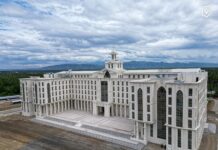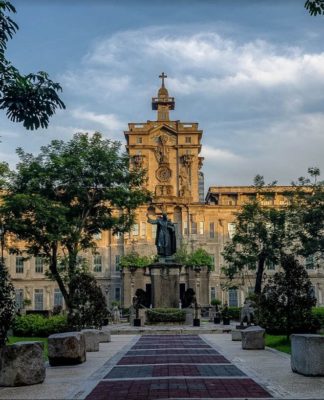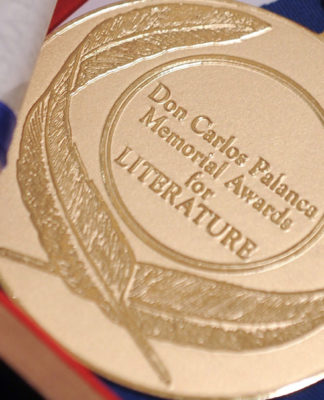
THE CONTROVERSIAL rendition of singer Martin Nievera of the Philippine National Anthem during the Manny Pacquiao-Ricky Hatton bout last May 2 has once again underscored the political, legal and artistic tokenism governing the Filipinos’ crooked, let alone fractioned sense of nationalism.
And there is no better way to demonstrate such patriotic shadowboxing than to bob and weave at the margins of Pacquiao’s sensational Round 2 demolition of the British “Hitman” by taking to task a misguided, nay mulish Filipino crooner for violating Section 37 of the Republic Act No. 8471 or the 1998 Flag and Heraldic Code of the Philippines which provides that “the rendition of the National Anthem, whether played or sung, shall be in accordance to the musical arrangement and composition of Julian Felipe.”
Irked by Nievera’s alteration of the Felipe masterpiece, Cavite Rep. Elpidio Barzaga, Jr. said he would file a “test case” against the singer for “departing from the musical arrangement of their fellow Caviteño Felipe.” Nievera disregarded the original marching beat of the national anthem “by opening at a slow tempo and ending on a sustained high note,” according to a Philippine Daily Inquirer report last May 9.
Barzaga said in an earlier Inquirer report last May 6 that apart from preserving the musical majesty and originality of the Felipe composition, he also wants “to establish jurisprudence whether or not the law would be applicable if the violation was committed outside the Philippines.”
Nievera meanwhile defended his overseas rendition of “Lupang Hinirang”, saying that he has sung the National Anthem “from the deepest part of my heart” and “to inspire a nation” rooting for its beloved ring gladiator’s impending showdown with the erstwhile undefeated Hatton.
But despite their well-meaning intentions, Barzaga and Nievera seem to distort the larger picture of Filipino nationalism by engaging in more personal hedging, therefore worsening our already amnesic brand of reverence to flag and country.
Barzaga suddenly waxing legalistic to justify his disgust over Nievera’s alleged unpatriotic rendition of the National Anthem smacks of calculated prejudice and hypocrisy. While it may be true that Nievera has went afoul with the Flag and Heraldic Code, Barzaga and the rest of those “patriotic” Filipinos sharing the same sentiment should re-examine the law to realize that the National Anthem is not the only symbolic bond attesting to our oneness as a people. For the record, it is not the only memento of Filipino nationalism that has been, and is continuously being dishonored by Filipinos themselves.
There is the National Flag. Section 34 of the Flag and Heraldic Code states that one of the prohibited acts against the National Flag is “to wear the flag in whole or in part as a costume or uniform” and “to add any word, figure, mark, picture, design, drawings, advertisements, or imprint of any nature on the flag.”
Intriguingly, were there patriotic guts riled – among our 42 congressmen (whose flight to Las Vegas halted Lower House proceedings of some of the most pressing pieces of legislation up for deliberation) and other government officials who trooped to the Pacquiao-Hatton fight – when the Pac-man, also dubbed as “Pambansang Kamao” marched to the ring donned in a robe sporting the national colors? Perhaps yes, but conspicuously only when Hatton supporters booed the Filipino boxing icon to the top of their lungs.
But to howl in patriotic loathing against Pacquiao’s choice of robe design? Not quite. At hindsight, how can our dear lawmakers turn a national treasure of heroic stature to a legal guinea pig if only to carry out a “test case”? The foregoing is certainly improbable as far as our 42 legislators who are even urging Pacquiao to run for congressman in 2010, are concerned.
How about subjecting to a “test case” a 2008 issue of Rogue Magazine which depicted a model wearing a skimpy Filipino-flag inspired outfit on its front cover? Wouldn’t such peddling of flesh under the garb of our national colors be enough to qualify for patriotic indecency and therefore constitute an outright affront to the Flag and Heraldic Code?
What about a poster showing the national flag with the superimposed words “Pilipinas Kong Mahal” on its lower right-hand portion which has been widely circulated around Manila during the time of former Mayor Lito Atienza? Isn’t that also an obvious transgression of the Code’s Section 34? Could it be that what is sauce for the goose is also sauce for the gander? Not quite.
By and large, the aforementioned cases are just some of the many violations hurled, either through commission or omission, against the Flag and Heraldic Code that should have merited legal attention a long time ago. In the first place, why should there be a need to file a “test case”?
Answer? Because no one is taking the Code seriously or if there are any, they tend to look at it from an individualistic point of view, like Nievera. If anything, our dear congressmen should be reminded that the “fervor” (as prescribed in the Code) they exhibit everytime they sing the national anthem hardly matches the crescendo of applauses and cheering they display to perk up the President during her State of the Nation address or the booming vocal projections they sputter on the plenary to grandstand. Now it can be told.
Political, legal, and artistic self-idolatry is the real “test case” of Filipino nationalism.
















